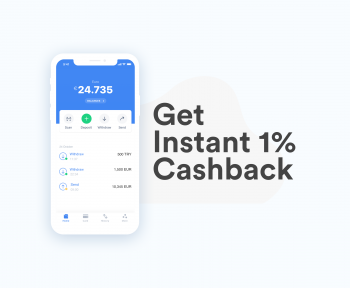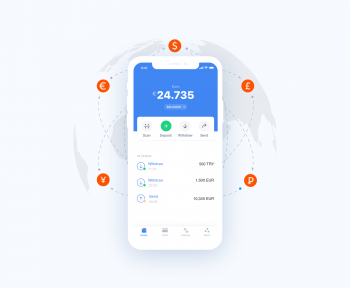The fundamentals of economics, thanks to the widely available access to information by means of the internet covering the whole globe, are familiar to most. An inseparable pair of those fundamentals is the concepts of supply and demand. A supply requires interest, or a market in its own terms, for it to survive and where there is a demand it should be met with a supply. “How much” or “at what point of equilibrium” is a matter of a discussion unique to each market so we will be taking a look at the digitalized world of commerce where fiat money is still a thing.
Yes, indeed, this article frowns upon the existence of fiat money. Although it still is so very commonly used, in 2020 online commerce recorded a 7,114 billion USD of volume and that was more than 22% of the previous year’s figures. Find a graph that shows year-by-year growth of online commerce volume and you will grasp the idea.
What is a Digital Wallet?
Enter the eWallets or digital wallets, you name it. With so much digital transaction going on snowballing year over year, it is only inevitable, or should we say natural, that global eWallet validity would become a reality, if not a necessity. Digital wallets are basically softwares that let you store and manipulate your electronic assets as you see fit. They come in two components, one that secures your data and provides encryption and another that utilizes a database to store, sort and edit your information as needed.
What are the eWallet Types?
Without a doubt there are several eWallet types and it would not be wise to go over them to provide a clearer picture.
Such a categorization obviously would start with the industry leaders, PayPal, which is an example of payment service providers. Now that’s what you could call a global eWallet, there are few jurisdictions where the conglomerate could not process payments and play a huge part in completing transactions of B2B, B2C and even C2C types worldwide.
They are closely followed by software – hardware giants practically own the mobile industry software-wise – the Android and iOS habitats are giant cauldrons of hot transactions that developers and end users benefit a lot, so simplifying payments was a no-brainer.
Top Digital Wallets for Businesses
Types of digital wallets have been joined by a new cadet in their ranks and they are cryptocurrency wallets indeed. Cryptocurrencies are intangible by nature so storage and manipulation of them could not be possible without types of digital wallets that address their needs of existence. These types of eWallet compartmentalize among themselves as well such as mobile, web, desktop and hardware crypto digital wallets.
eWallet types have categorizable delivery distinctions as well. Some use Near-Field Communication integrated into cards or mobile phones which only require “tapping” of sender and receiver devices for the transaction to take place. And then there is the good old SMS payment still keeping its position as a form of confirmation and verification of a purchase to be billed. Also for digitally deliverable products and services software catered to virtual world’s assets could be utilized.
Consequently, digital wallets are the future and we could expect hybrid and new-gen types of eWallet in the forthcoming months as the virtual world shapes our reality stronger than the physical world itself.



